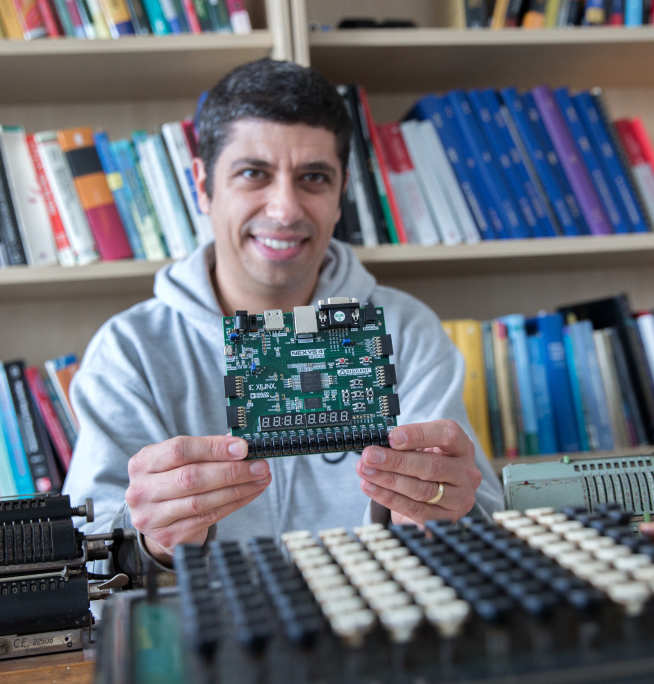
Self-driving cars use machine learning to recognise hazards and road signs

Imperial researchers will lead a new international EPSRC Centre to develop pioneering approaches to machine learning.
Machine learning is a key component of facial recognition and personal assistants like Siri or Alexa – and in more ambitious services like self-driving cars.

A type of artificial intelligence, machine learning uses neural networks that process and ‘remember’ information for later use. For example, if you show a computer enough images of cats, it will eventually be able to identify cats in most new cat photos – and will get better at it with practice.
Demand for smarter and smarter machines is growing rapidly, but we’re running out of the physical power needed to process the wealth of information.
This is where Imperial’s new international Engineering and Physical Sciences Research Council (EPSRC)-funded Centre for Spatial Computational Learning comes in.
New tricks
By improving hardware on the ground, we can allow for more powerful machine learning on the edge and the cloud. Professor George Constantinides Department of Electrical and Electronic Engineering
The information devices use to personalise our experiences, or keep us safe, is currently processed away from the devices themselves in the ‘cloud’ – a virtual storage and computer network.
Embedding artificial intelligence into everyday objects requires processing data on local devices, like phones – known as ‘the edge’ - but the computing power needed to cater for neural networks is too great for low-energy handheld devices to manage.
Centre lead Professor George Constantinides, of Imperial’s Department of Electrical and Electronic Engineering, said: “At the moment, we train neural networks to recognise certain things, like our voices, and offload processing to the cloud, which is fine if we’re limited to today’s uses of machine learning, like Siri or Alexa.

“However our ambition is leading us towards myriad new applications such as self-driving cars, which require much more information than photos of cats. We therefore need more processing power using less energy.
“By improving hardware on the ground, we can allow for more powerful machine learning on the edge and the cloud.
“Thus the aim of this Centre is to make low power, cheap to produce hardware to optimise its energy usage – from edge devices to the networked infrastructure of the cloud.”
Puzzle pieces
Bringing these leaders together for the next three years will help us write the roadmap to see us into the future. Professor George Constantinides Department of Electrical and Electronic Engineering
Professor Constantinides hopes the Centre will help establish an international community and define the research direction for the next 20 or so years.
He said: “At the moment, different international groups have the key to different parts of the puzzle, so bringing these leaders together for the next three years will help us write the roadmap to see us into the future.”
The Centre will be an international collaboration between the UK, Canada, and the USA.
The ESPRC will provide £1.2million over three years, which will help fund two postdoctoral researcher posts and a substantial researcher exchange programme among the constituent collaborators.
-
Centre collaborators include the University of Southampton, the University of Toronto and the University of California, Los Angeles.
Industrial partners include Arm, Imagination Technologies, Xilinx, Corerain, and Maxeler Technologies.
Supporters

Article text (excluding photos or graphics) available under an Attribution-NonCommercial-ShareAlike Creative Commons license.
Photos and graphics subject to third party copyright used with permission or © Imperial College London.
Reporter

Caroline Brogan
Communications Division

Contact details
Tel: +44 (0)20 7594 3415
Email: caroline.brogan@imperial.ac.uk
Show all stories by this author




Leave a comment
Your comment may be published, displaying your name as you provide it, unless you request otherwise. Your contact details will never be published.